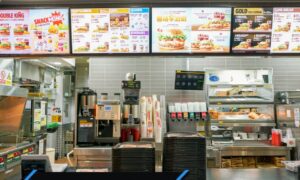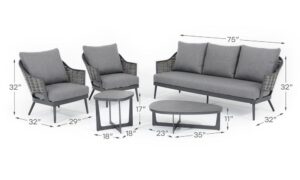Restaurant interior design plays a pivotal role in shaping the dining experience. The ambiance, layout, and aesthetics of a restaurant significantly influence customer satisfaction and can be a key factor in a restaurant’s success. Thoughtful design not only attracts patrons but also encourages them to return, making it an essential aspect of the hospitality industry. This article explores the key elements of effective restaurant interior design, offering insights on how to create a memorable dining experience that resonates with guests.
Understanding the Importance of Ambiance:
The ambiance of a restaurant sets the tone for the dining experience. It encompasses the lighting, music, color schemes, and overall atmosphere. A well-designed ambiance can evoke emotions and create a specific mood that aligns with the restaurant’s theme and cuisine. For instance, a cozy, dimly-lit interior with soft jazz music might be ideal for a fine dining restaurant, while a bright, lively atmosphere with contemporary decor might suit a casual eatery. The key is to ensure that every element of the design works harmoniously to create a cohesive and inviting environment.
Optimizing Layout for Flow and Functionality:
A restaurant’s layout is crucial for both customer comfort and operational efficiency. The design should facilitate smooth movement for both patrons and staff, ensuring that service is prompt and unobstructed. Key considerations include the placement of tables and chairs, the location of the kitchen and service areas, and the ease of access to restrooms. Thoughtful layout planning can maximize seating capacity while maintaining a comfortable and spacious feel. Additionally, the layout should be adaptable to accommodate different group sizes and dining preferences.
Choosing the Right Furniture and Fixtures:
The selection of furniture and fixtures is a critical aspect of restaurant interior design. Comfort and durability should be top priorities, as well as ensuring that the style of the furniture complements the overall design theme. For instance, sleek, modern furniture might be appropriate for a contemporary restaurant, while rustic wooden tables and chairs could enhance the charm of a country-style eatery. Lighting fixtures, too, play a significant role; they should provide adequate illumination while enhancing the restaurant’s aesthetic appeal.
Incorporating Local Culture and Themes:
Integrating local culture and themes into the design can create a unique and authentic dining experience. This could involve using local materials, artwork, and decor that reflect the cultural heritage of the area. Restaurants with a specific culinary focus can also benefit from themed decor that aligns with their menu. For example, an Italian restaurant might feature Tuscan-inspired decor, while a seafood restaurant might use nautical elements to enhance the dining experience. The goal is to create a space that tells a story and connects with guests on a deeper level.
Enhancing the Dining Experience with Sensory Elements:
Effective restaurant interior design goes beyond visual appeal; it engages all the senses to create a holistic dining experience. Consider the impact of sound, smell, and even touch in the design process. Acoustic treatments can help manage noise levels, ensuring a pleasant auditory environment. Scent diffusers can introduce subtle aromas that complement the cuisine, enhancing the overall sensory experience. Textural elements, such as plush seating or natural wood surfaces, can add tactile interest and comfort.
Embracing Sustainability in Design:
Sustainable design practices are becoming increasingly important in the hospitality industry. Incorporating eco-friendly materials, energy-efficient lighting, and sustainable furnishings not only benefits the environment but also appeals to the growing number of environmentally conscious consumers. Restaurants can reduce their ecological footprint by using reclaimed wood, recycled materials, and low-VOC paints. Additionally, incorporating greenery and natural elements can improve air quality and create a more inviting atmosphere. Working with a hotel interior designer can help seamlessly integrate these sustainable elements into the overall design, ensuring both aesthetic appeal and environmental responsibility.
Conclusion
Restaurant interior design is a multifaceted discipline that requires a balance of aesthetics, functionality, and sensory engagement. By focusing on ambiance, optimizing layout, choosing appropriate furniture and fixtures, incorporating local culture, and embracing sustainability, restaurateurs can create memorable dining experiences that delight customers and encourage repeat visits. Thoughtful and innovative design can transform a restaurant into a beloved destination, setting it apart in a competitive market and ensuring its long-term success.
Read More From Techbullion And Businesnewswire.com



































